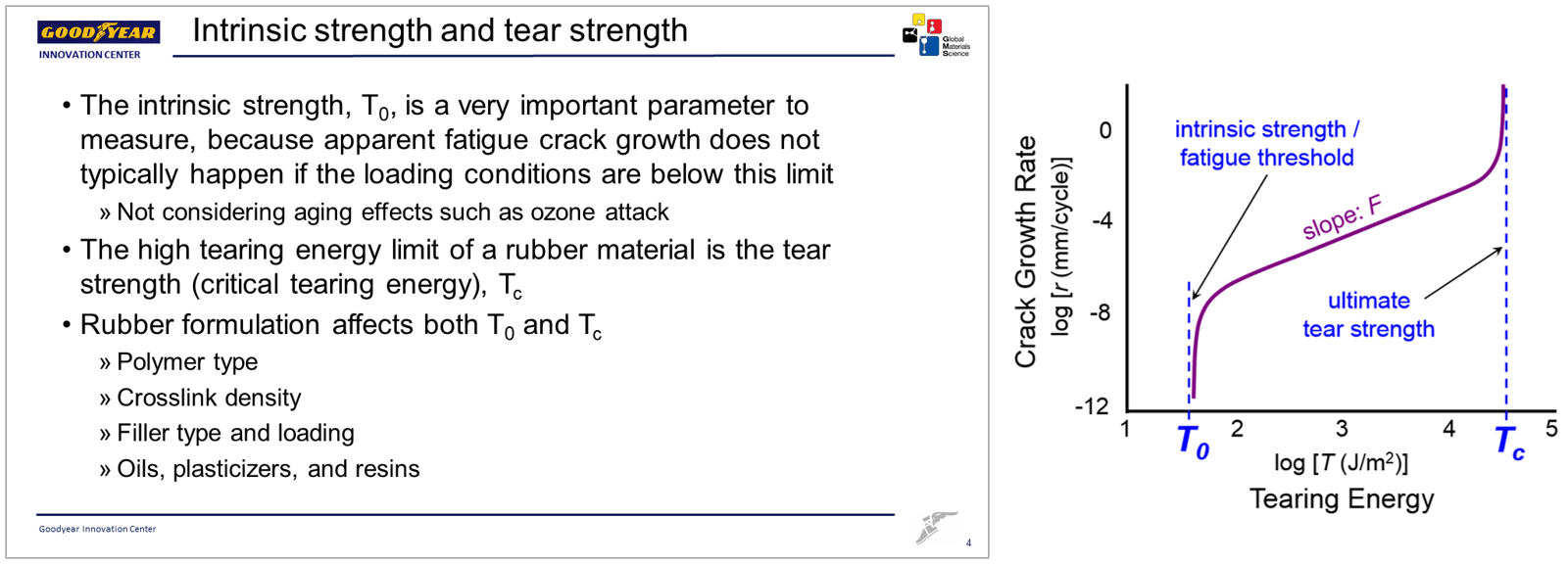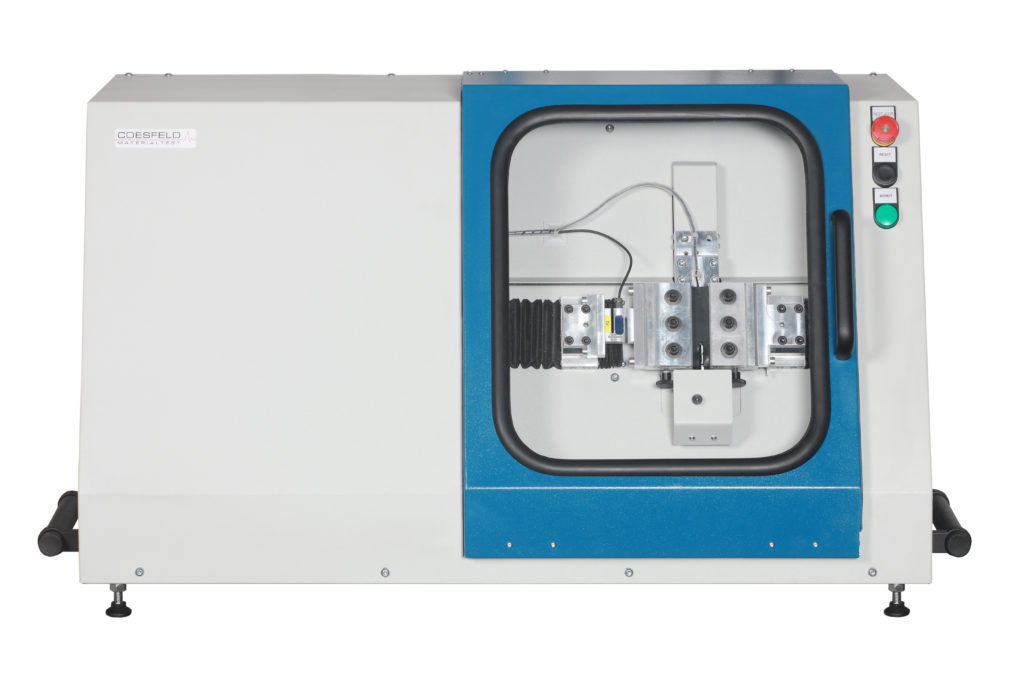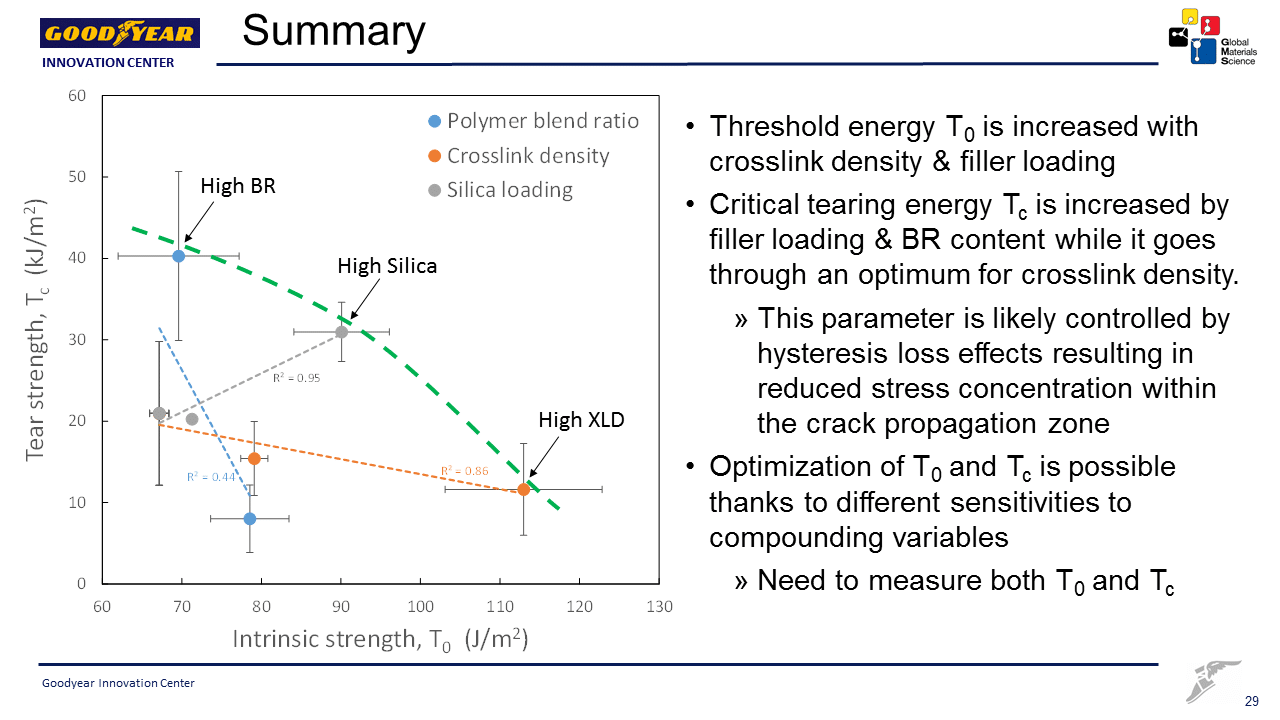My last blog post (Getting a Quick Read on Durability with the Intrinsic Strength Analyser) highlighted a one-hour test on the Intrinsic Strength Analyser (ISA) to screen elastomer materials for long-term fatigue performance, with applications in materials R&D and plant mixing quality control. To illustrate the use of this approach for rubber compound development, we recently had the opportunity to collaborate with Dr. Nihat Isitman from Goodyear Tire & Rubber Company in Akron, Ohio and Dr. Radek Stoček from Polymer Research Laboratory in Zlín, Czech Republic.1 Dr. Isitman led this project and was scheduled to present our research at the Spring 2020 Technical Meeting of the ACS Rubber Division, but the meeting was cancelled due to COVID-19 precautions. Instead, the Rubber Division is offering the content online, and the meeting presentations are available here for a modest fee.
Our study considered model tread compounds based on the well-known green tire formulation, which is a compatible blend of solution styrene-butadiene rubber (SBR) and high-cis butadiene rubber (BR) that is reinforced with a silica-silane system for low rolling resistance (improved fuel economy) passenger tires. Additional production compounds used in actual tire treads were also tested, but the proprietary results for these materials were not included in the public presentation. The SBR/BR ratio, silica loading, and crosslink density were all varied in this investigation. For each rubber formulation, the ISA was used to measure the fatigue threshold (T0) and critical tearing energy (tear strength; Tc), which bracket the two ends of the fatigue crack growth curve as shown below.
The established cutting method of Lake and Yeoh2,3 is used for assessing T0 on the ISA, and the one-hour test on this benchtop instrument is concluded with a tearing procedure to measure Tc. The ISA is manufactured by Coesfeld GmbH & Co. in Dortmund, Germany, and distributed in the Americas by Endurica LLC (see photo).
The slide image below summarizes the key findings of this research collaboration. Optimization of T0 and Tc is possible thanks to different sensitivities to the various compounding variables. It is important to measure both fatigue threshold and tear strength to quantify durability potential of rubber materials, and the ISA is an efficient and effective instrument for these measurements. To learn more about this testing equipment for the rubber lab, please visit our Instruments page and contact us at info@endurica.com with questions.
References
- N. Isitman, R. Stoček, and C. G. Robertson, “Influences of compounding attributes on intrinsic strength and tearing behavior of model tread rubber compounds”, paper scheduled to be presented at the 197th Technical Meeting of the Rubber Division, ACS, Independence, OH, April 28-30, 2020 (online presentation due to meeting cancellation).
- G. J. Lake and O. H. Yeoh, “Measurement of Rubber Cutting Resistance in the Absence of Friction”, International Journal of Fracture 14, 509 (1978).
- C. G. Robertson, R. Stoček, C. Kipscholl, and W. V. Mars, “Characterizing the Intrinsic Strength (Fatigue Threshold) of Natural Rubber/Butadiene Rubber Blends”, Tire Sci. Technol. 47, 292 (2019).



